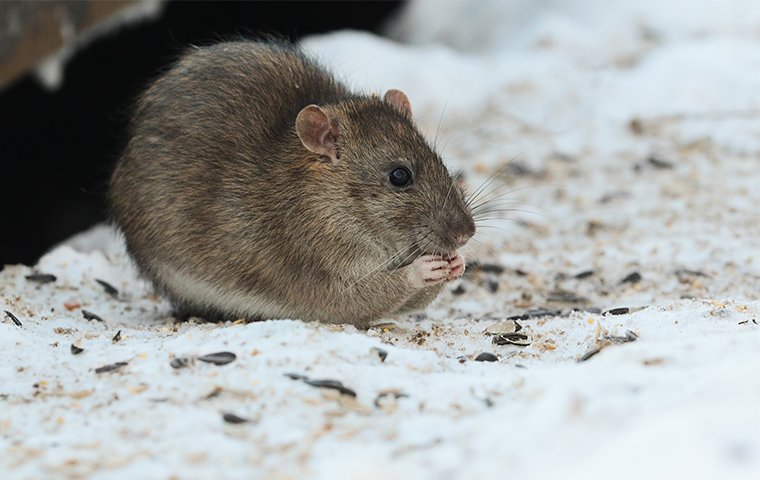WHAT ARE RATS?
Rats are a dangerous, damaging, and problematic species of rodents that no home or business owner ever wants to deal with. Rats thrive in a variety of indoor and outdoor environments. They grow to be between 15 and 17 inches long, including their tails, and the fur covering their bodies is grey, brown, or black, with lighter-colored bellies. They have large heads and feet that are proportional to their body, and their long, scaly tails are void of hair.
ARE RATS DANGEROUS?
Yes, rats are dangerous. Rats are wild animals and, therefore, are unpredictable. Never corner or make a rat feel threatened, as they will defend themselves by biting or scratching. Rodents have large, sharp front incisors; to prevent them from overgrowing, they gnaw on anything they come across. Rats cause a lot of structural damage inside buildings – chewing through wires, pipes, drywall, and flooring. These chewing habits may also lead to fires. Rats also have poor eyesight, so to find their way back and forth from their nest to food sources, they travel along walls and furniture, leaving behind unsightly grease marks.
In addition to structural damage, rats spread disease, viruses, and pathogens such as murine typhus, leptospirosis, salmonellosis, and rat-bite fever to both people and animals. They contaminate food, surfaces, dishes, utensils, and more with their shed fur and trails of excrement and urine. Additionally, their presence triggers allergy attacks in some.
WHY DO I HAVE A RAT PROBLEM?
Rats live in high populations in urban areas because we provide them with easy access to food, water, and shelter. These rodents have learned to rely on us for some of their food and shelter needs. Rats are difficult to keep out, moving into buildings through openings at ground level and found along the roofline; they only require a space the diameter of a quarter to squeeze through. They feed on a variety of things including grains, meats, fish, nuts, seeds, and some fruit. Open trash containers or dumpsters, pet food, outdoor eating areas, container gardens, and bird feeders all attract rats. Once comfortable foraging for food on your property, they will eventually make their way inside to seek shelter and forage for food.
WHERE WILL I FIND RATS?
Rats nest outdoors in a variety of locations. Depending on the species, they will burrow in piles of garbage, in dense vegetation, and under concrete slabs and foundations. Others prefer to nest above ground in trees or rooflines. If rats make their way inside a home or other building to nest, they choose dark, quiet areas like basements, attics, the backs of cabinets or closets, and behind walls voids. They also frequent parks, docks, the edges of riverbanks, and anywhere there is trash.
HOW DO I GET RID OF RATS?
Partnering with Broadway Pest Services is the best way to get rid of rodents from your New York City property. Our pest management technicians are highly trained and use the latest advancements in technology and science to effectively eliminate pests from residential and commercial properties. At Broadway Pest Services, we provide excellent customer service and the pest control services needed to get and keep rats out using inspection, treatment, and exclusion measures.
At Broadway Pest Services, we know the pests that find their way into New York City structures and how to protect people and property from the damage and dangers they create. If you would like to learn more about our rat control solutions, reach out and speak to one of our helpful and friendly professionals today!
HOW CAN I PREVENT RATS IN THE FUTURE?
In addition to our residential pest control and commercial pest control service offerings, our professionals recommend the following tips:
- Seal up the spaces around air-conditioners and utilities entering your house.
- Make sure dumpsters or trash cans have tight-fitting lids on them.
- Place mesh covers over vents and drains leading into your home.
- Keep storage areas inside your home organized.
- Make sure outdoor eating areas are free of food debris.
- Cut back overgrown vegetation from the exterior of your building.
- Clear the overgrown vegetation and piles of debris from your yard.
- Eliminate entry points into your structure by sealing cracks in the foundation, exterior walls, and roofline.
Categories:

